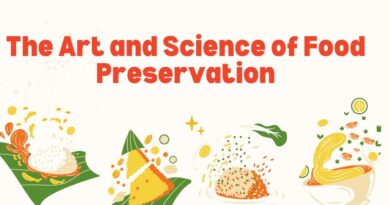Understanding Autotrophic Nutrition: The Become Self-sustaining Energy Resource in Natural
The key component of Earth’s biosphere is the incredible capacity of living things to create individual meals or separate chemicals. From the colorful greens of plant life to the microscopic wonders of bacteria, autotrophs shape the backbone of lifestyles’s strength cycle. We delve into the intricacies of Autotrophic Nutrition, exploring their types, significance, and ecological effects. Join us on an adventure via the fascinating global nature’s self-maintaining strength source, wherein sunlight hours, water, and carbon dioxide converge to gas lifestyles itself.
Types of Autotrophs
Understanding Autotrophs:
Autotrophs, the number one producers in ecosystems, own the particular capacity to synthesize their private meals from inorganic materials. These organisms feature the inspiration of meal webs, converting electricity from sunlight hours or chemical belongings into herbal compounds. Their self-maintaining nature is pivotal for keeping life on Earth.
Classification of Autotrophs:
Based only on their power manufacturing, self-sustaining organisms can be divided into two main classifications: aerobic autotrophs and chemosynthetic autotrophs to utilize
- Photosynthetic Autotrophs: Utilize daylight hours as their number one energy deliver to stress the device of photosynthesis. Examples consist of plant life, algae, and certain microorganisms.
- Chemosynthetic Autotrophs: Derive power from chemical reactions rather than daylight. Examples encompass sulfur microorganisms and certain archaea.
Examples of Autotrophs:
- Algae: Range from unmarried-celled microalgae to massive multicellular seaweeds. Crucial in aquatic ecosystems as the number one manufacturer.
- Plants: Utilize chloroplasts to seize daylight and convert it into chemical power via photosynthesis.
- Iron Bacteria: Found in iron-wealthy environments like acidic soils, oxidizing ferrous iron to ferric iron.
- Sulfur Bacteria: Thrive in sulfur-wealthy environments, utilizing hydrogen sulfide or elemental sulfur as power assets. Understanding the range and importance of autotrophs affords insights into the vital processes of the usage of ecosystems globally.
Photosynthetic Autotrophs
Mechanism and Process:
Photosynthetic Autotrophic Nutrition is the electricity of daylight to strain photosynthesis. This manner consists of absorption of light, conversion of mild energy, carbon fixation, and utilization of merchandise.
Examples:
Include terrestrial flowers, algae, cyanobacteria, and euglena.
Chemosynthetic Autotrophs
Chemosynthetic autotrophs derive energy from chemical reactions in the area of daylight hours. They harness the strength released from chemical substances, which includes hydrogen sulfide or methane, to deliver natural molecules. Chemosynthesis takes place in environments without daylight hours, which include deep-sea hydrothermal vents and positive soil ecosystems.
Mechanism and Process:
Chemosynthetic autotrophs achieve power from chemical reactions, fixing carbon dioxide, and synthesizing herbal molecules.
Examples:
Methanogenic microbes, thermophilic germs, sulfur organisms, and iron bugs.
The Value of a Self-sufficient Dieting
- Foundation of Food Webs: Autotrophs shape the base of meal webs, preserving energy that goes along with the glide via ecosystems.
- Oxygen Production: Photosynthetic autotrophs are essential members of oxygen manufacturing.
- Carbon Sequestration: Autotrophs mitigate climate alternates with the beneficial useful resource of sequestering carbon dioxide.
- Habitat and Ecosystem Engineering: Autotrophs form terrestrial and aquatic habitats, imparting shelter and food for numerous species.
- Nutrient Cycling: Autotrophs facilitate nutrient cycling via ecosystems.
- Ecological Resilience: Autotrophs stabilize ecosystems and buffer in the direction of environmental disturbances.
Conclusion:
In exploring autotrophic vitamins, we uncovered the complicated mechanisms and profound importance of nature’s self-retaining strength source. From the expensive greenery of forests to the unseen depths of the sea floor, autotrophs play pivotal roles in shaping ecosystems, maintaining life, and regulating Earth’s biogeochemical cycles. Whether through photosynthesis or chemosynthesis, those first-rate organisms exemplify the resilience and flexibility of existence in several environments. As stewards of our planet, understanding and appreciating the importance of autotrophic vitamins is important for selling biodiversity, mitigating weather change, and making sure of the well-being of present and future generations





